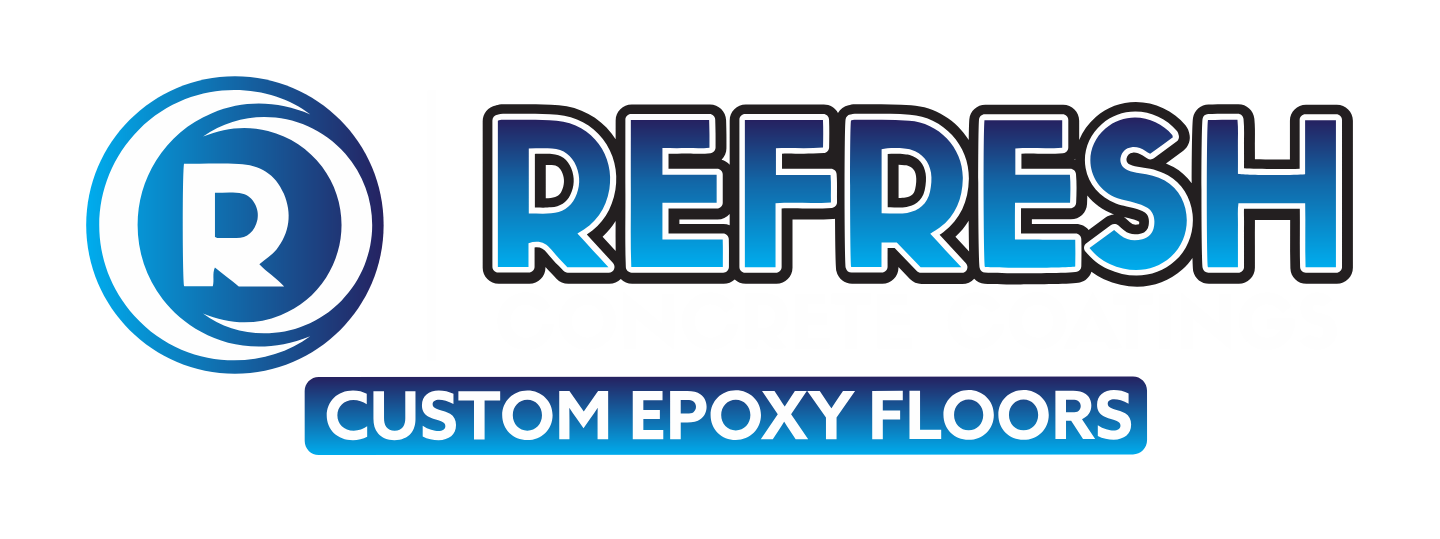What Is the Downside of Epoxy Flooring?
Epoxy flooring sounds amazing at first glance — and it can be. But here’s the truth: most of the downsides you hear about come from cheap products and poor installation.
At Refresh Concrete Coatings, we get called out all the time to fix other people’s mistakes — brand-new construction homes where builders hired the cheapest crew, or DIY projects that peeled after one hot summer. It’s frustrating for homeowners, and it gives “epoxy” a bad name.
Let’s break it down.
The Common Downsides of Epoxy Floors
Peeling and Chipping
This happens when installers skip proper surface prep. If the concrete isn’t ground with diamond tooling, the epoxy just sits on top like paint. A year later? It’s peeling off in sheets.Hot Tire Pickup
Probably the #1 complaint. You park your car after a drive, the hot tires soften the coating, and suddenly you’ve got black tire marks or even chunks lifting up.Yellowing and Stains
Budget products, especially water-based epoxies, can’t handle Florida UV or everyday spills. They yellow, chalk, or stain quickly.
Short Lifespan
DIY kits or builder-grade jobs might look decent for a year or two, but they don’t last. That means more re-dos, more money, and more hassle.
How Our System Solves These Problems
Here’s where the game changes. The problem isn’t “epoxy floors.” The problem is cheap epoxy floors. At Refresh Concrete Coatings, we install a full flake epoxy system with polyaspartic topcoat designed to eliminate the downsides:
✅ Diamond Grinding Prep – This ensures the coating bonds deep into the concrete. No shortcuts. No peeling.
✅ 100% Solids Epoxy Basecoat – Not watered down. No fillers. Just pure, industrial-grade epoxy that cures rock solid.
✅ Full Flake Broadcast – Not only adds thickness and durability but also hides imperfections and gives a clean, modern look.
✅ Commercial-Grade Polyaspartic Topcoat – Specially formulated to resist hot tire pickup, oil stains, and UV yellowing. This is the same stuff used in commercial settings, brought to your garage.
Put simply: the weak points that cause most floors to fail? We build the solution into every step.
Cost vs. Value: The 2-Car Garage Example
Here’s a real look at the numbers.
🔴 DIY / Cheapest Option
Cost: ~$1,000 (kit, flakes, sealer, grinder rental, misc supplies)
Looks Good For: 1–2 years
The Catch: Hot tire marks, peeling, stains. You’ll likely redo it multiple times
10-Year Cost: $4,000–$5,000
🟢 Refresh Concrete Coatings (Full Flake + Polyaspartic)
Cost: ~$2,200 (average 2-car garage)
Looks Good For: 10–15 years
The Difference: Proper grinding + 100% solids epoxy + polyaspartic topcoat. No peeling. No hot tire pickup. No UV yellowing
10-Year Cost: $2,200 (done once, done right)
The Bottom Line
The “downsides” of epoxy flooring are real — but only if you cut corners. With proper prep and professional-grade materials, those downsides disappear.
That’s why we believe in doing it right the first time. One install, one investment, years of peace of mind.
👉 Are you Ready to see what your garage could look like?


